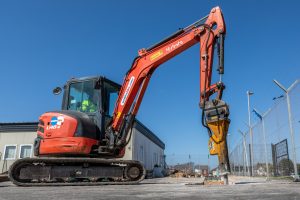Soaring temperatures create problems for commuters

High summer temperatures are causing problems for rail services, with some lines having speed restrictions imposed due to tracks buckling in the heat.
Network rail engineers working in Carlisle yesterday shared images of tracks that had been affected by temperatures approaching 50 degrees Celsius.
As the air temperatures in Cumbria hit the mid to high 20s, the sun-baked tracks north of Carlisle railway station hit 49 degrees Celsius.
This caused the rails to expand and bend slightly in their settings, as shown in the photograph taken by a Network Rail engineer.
Ian Joslin, head of Network Rail’s Carlisle delivery unit, said: “We maintain our rails to withstand fluctuations in temperature so they flex as little as possible.
“However, sustained baking by the sun can occasionally lead to steel rails buckling, like they did yesterday at Carlisle.
“When this happens we slow down trains to keep everyone safe.”
Services were temporarily restricted from using the affected portion of track.
Yesterday there was a total of eight speed restrictions in force, for a short while, and today, so far, a section of track near Penrith has been affected.
Network Rail engineers monitor track temperatures continually, but even more keenly during heat waves.
The system has built-in remote monitoring systems that tell engineers that a section of track might be expanding too much and could cause problems.
This is when engineers introduce local speed restrictions. Slower trains exert lower forces on the track and this reduces the chance of buckling.
Rails sometimes buckle even with prevention in place, and this means Network Rail needs to close the line and repair the track before trains can run again.
This can disrupt journeys because engineers often have to wait until the rail temperature has dropped before they can carry out essential repairs.
Network Rail works closely with specialist weather forecasters and local weather stations to prevent tracks from getting too hot.
Among the methods employed to reduce damage to tracks, engineering teams check track stability each winter as part of ongoing maintenance, and strengthen any weak parts before summer.
They paint certain parts of the rail white so they absorb less heat – and expand less.
Typically, a rail painted white is 5°C to 10°C cooler than one left unpainted.
As most track is made up of long pieces of rail that are stretched and welded together, there is much less chance of buckling in very high temperatures because there is reduced compression.
When a track is made up from short rails bolted together, engineers leave small gaps between each one so that expansion doesn’t cause a problem.
Engineering teams are also improving how they measure and calculate rail temperatures.
One way is by installing probes that alert them when track temperatures rise to give them a chance to take action and stop a problem before it happens.
In some parts of Britain’s rail network, tracks are laid on reinforced concrete slabs rather than on sleepers and ballast (the bed of stones that supports the sleepers), which helps to prevent rails from buckling.








